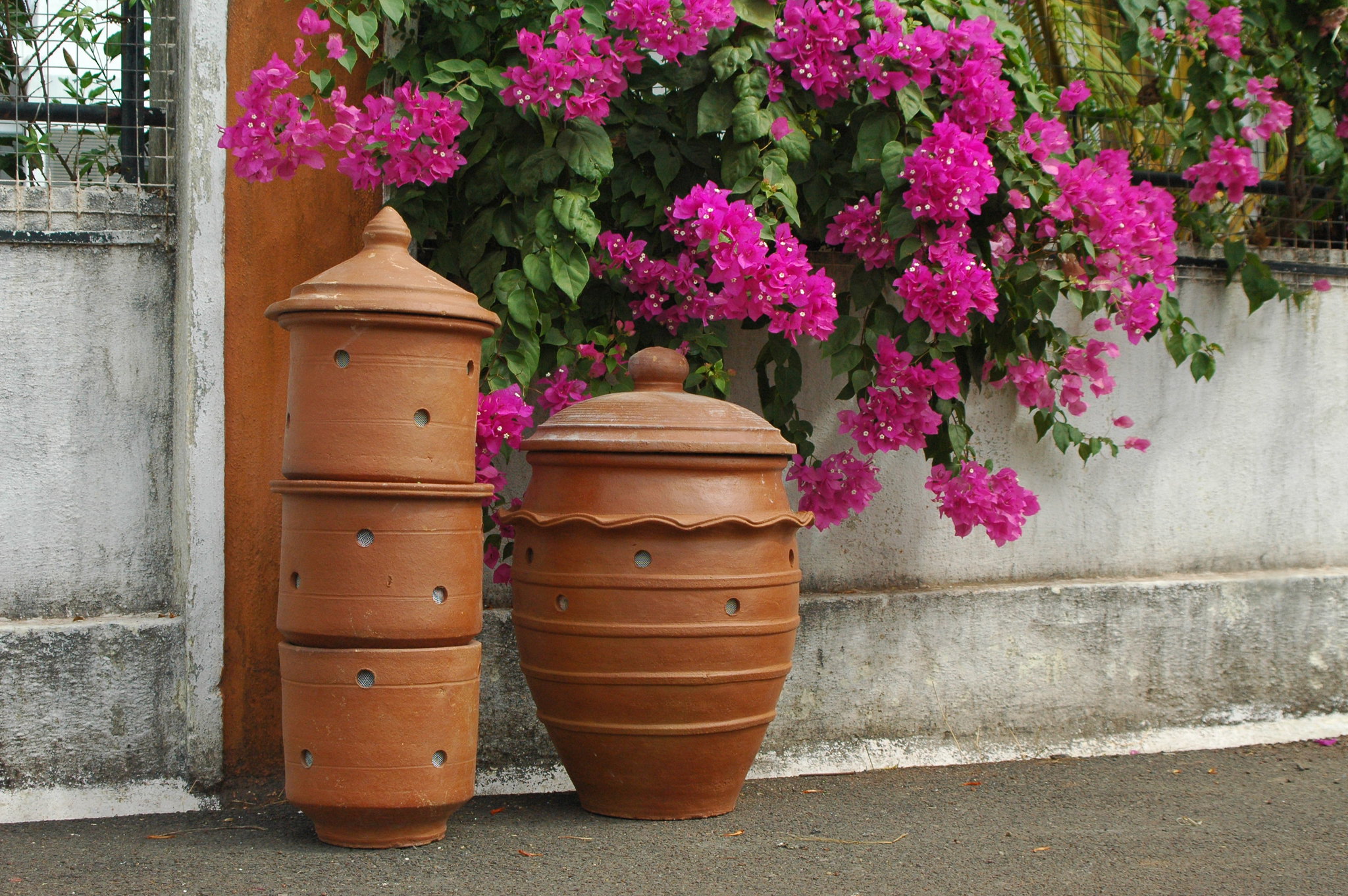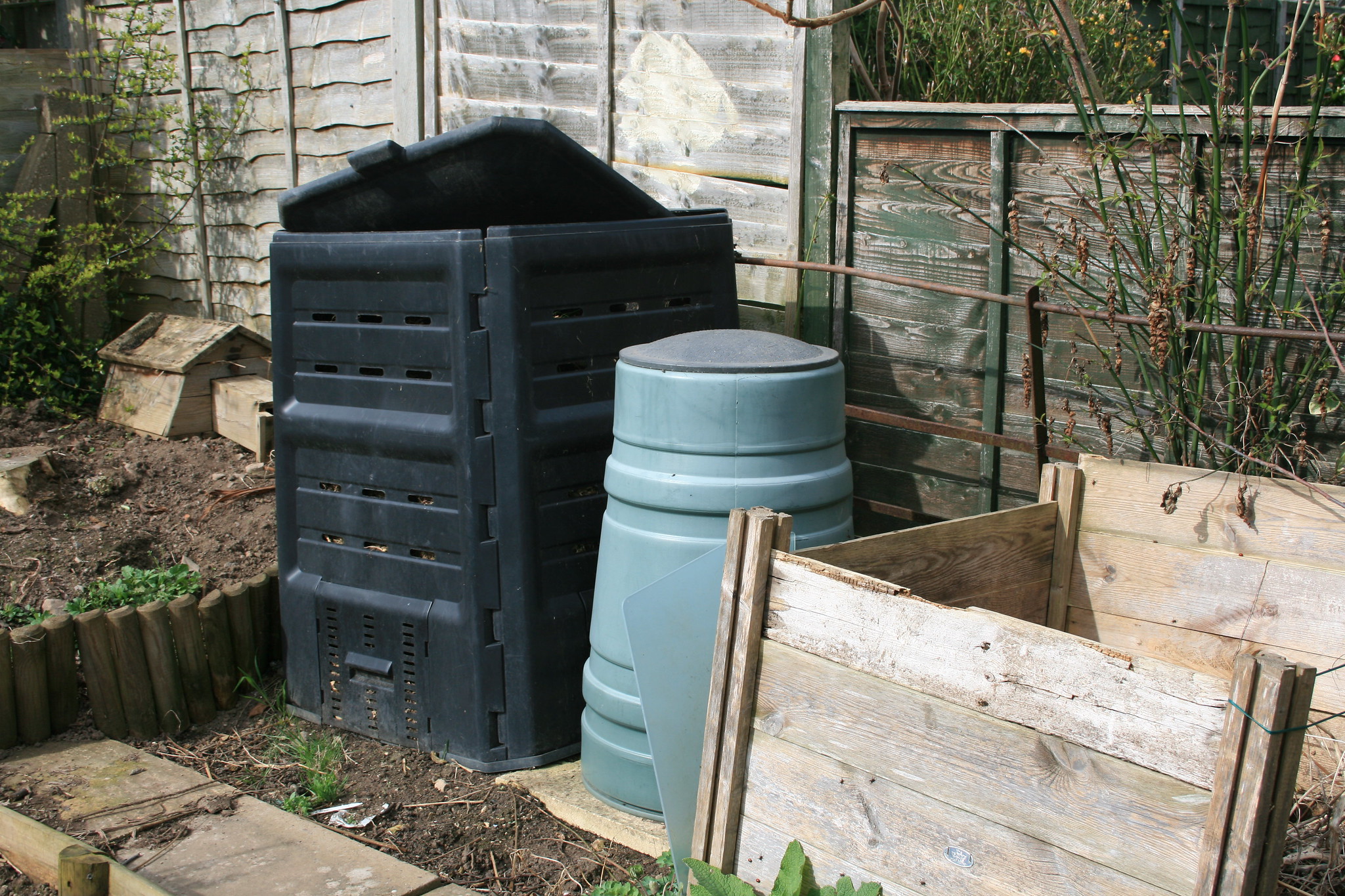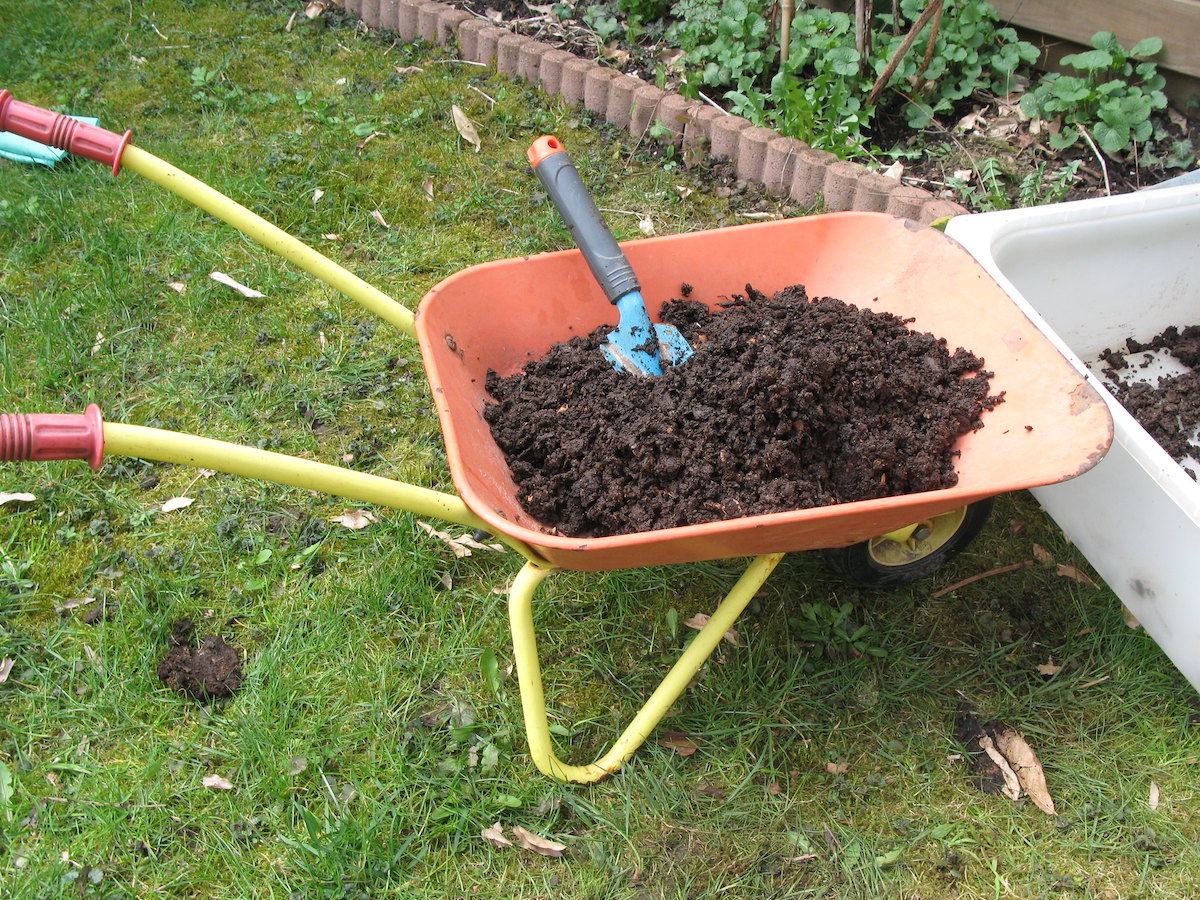Compost bins made from wood pallets in a garden. Photo by Jo Zimny Photos used under CC BY-NC-ND 2.0
Composting can be for anyone! It’s a great way to transform food scraps into a garden amendment that will save you money and be less of a burden on the planet. There are many ways to get started with composting, from municipal programs and community gardens, in-apartment worm farms, and backyard compost piles.
Why compost?
Wasted food is bad for people and the environment. Prevention through means like better meal planning and buying only what you need is generally the best way forward, but there will always be cases where a head of lettuce is forgotten and goes slimy, or trimmings from fruit or vegetables need to be tossed. When that’s the case, composting can create fewer greenhouse gas emissions compared to sending food to landfills.
Composting is a natural decomposition process that breaks down food scraps and other organic materials into a nutrient-rich garden amendment; it can be used to replace things like chemical fertilizers or peat moss. Using compost is great for soil health and structure, and has far less environmental burden than the use of synthetic fertilizers.
Find your composting community
Many cities, farmers’ markets, and community gardens have composting programs that will accept your food scraps. Find your nearest program and learn more about their requirements and what kind of items they accept - depending on their scale and technology, they may or may not accept meat or dairy or compostable materials like forks and packaging.
While some programs might have pick-up, others require you to drop off at a certain time and location. This will mean holding on to your scraps for a week or more until you can get rid of them. Many people freeze their composted scraps until it’s time to drop off, preventing smell entirely. If you don’t have freezer space you can invest in bins or containers that can hold your scraps and cut down on odor.

A pair of traditional Indian terracotta composters. - Photo by VitaminGreen used under CC BY-NC 2.0
Composting in small spaces
If you live in a smaller space, like an apartment, without access to a municipal program, or simply want to compost on your own you still have plenty of composting options. If you have communal space you might be able to get your neighbors on board! Or if you have a little yard or a balcony, consider a small compost tumbler.
If you’re indoors-only, you’ll want to consider your budget - there are a lot of high-tech and pricy options, like the Mill, Lomi, and Vitamix, which all break down your scraps. While more environmentally friendly than sending them to the landfill, these products aren’t necessarily producing compost but a compost additive. Terracotta is a great low budget way to compost at home, using a material called cocopeat. Beautiful terracotta composter pots are available for purchase online, or can be DIY’d.
If you don’t mind worms in the house, vermicomposting can also be a great option. Check out the urban worm bag or the stylish stackable system by hot frog. Bokashi is a traditional Japanese method to create pre-compost with a special bucket and probiotics. It’s cheaper than the Mill and other high-tech options, but it also won’t create finished compost for you. The final product needs to be buried to make it usable as compost. If you have a friend in the country who’d appreciate your compost this might be a good solution for you.

You can build a compost heap with wood, chicken wire, or purchase a plastic one online.
- Photo by Emma Doughty used under CC BY-NC 2.0
Composting with plenty of space
If you have a yard, the easiest way to compost is simply to create piles, ideally in an out-of-the way area. If you have pets or small children, have a small yard, or prefer a tidier look, you might want your compost more contained. You can build compost containers with chicken wire, wood fencing, bricks, or whatever you have available. For those less inclined to DIY (and who don’t mind using plastic), there are economical options available in tumbler or bin form.
For compost to do its thing, you need the right balance of nitrogen and carbon sources. Many composters refer to this as “green” and “brown”. You need a ratio of 2:1 carbon to nitrogen for the most effective decomposition. Carbon sources or “brown” ingredients include paper, straw, wood chips, dry leaves, and pine needles. Nitrogen sources or “green” ingredients include food waste or fresh grass clippings. Compost piles also need air and water to thrive and so should be turned and watered periodically. Effective management of your compost pile can mean it’s ready for use more quickly.
General rules for composting
The method you pick will determine exactly what you can and cannot compost. In general, flowers, rice and grains, eggshells, fruit and vegetable scraps, and cooked food (free from oil, dairy, or meat) are all good candidates for composting. For most methods, you should not compost dairy, meat, oils, or pet or human waste. Most at-home composters are engaging in what’s called cool or passive composting where materials are added over time. This means temperatures only reach 110° F, which does not kill diseases that can be present in human or pet waste.
Plus, composting bones, meat, and dairy can attract unwanted pests (like rodents) to your garden. Diseased plants or seeding weeds should also not be composted as they can spread the disease or weeds to your garden when the compost is used. If you pick a specific in-apartment approach, make sure to familiarize yourself with it well. Some, like the high tech food compressors or Bokashi, are able to handle meat and dairy.

How to use your compost
You’ll know your compost is done when it’s a nice rich black without odor. Many people sieve their compost to remove any larger chunks. In-apartment composters might put compost on the top of their house plants or windowsill herb gardens, or you might want to use when you’re repotting for the season. If you have an outdoor garden, kick off your season right by mixing a couple inches of compost into your soil. This will enrich your soil and should mean that you have no need of any additional fertilizers for the season, though testing your soil to understand its specific needs is always advisable.
